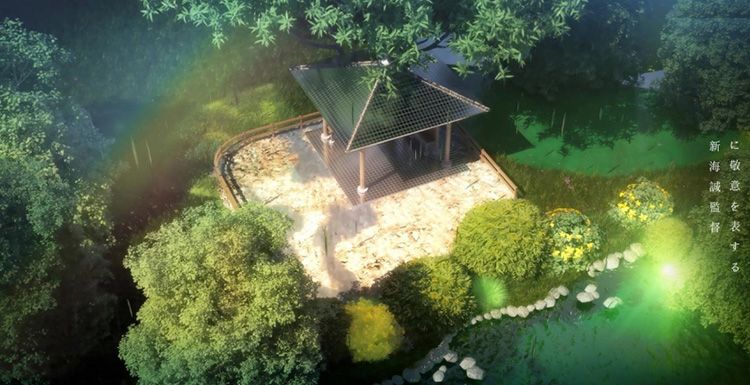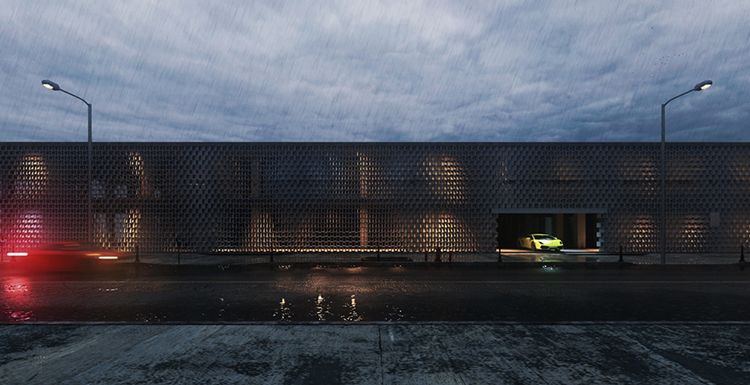3ds Max Tutorial: Analysis of Building Rendering in Dusk

Fox Renderfarm, as a leading archive render farm and cloud rendering services provider, brings to you the analysis of architectural renderings at dusk made with 3ds Max and V-Ray. An outstanding works include two aspects: one is the picture effect, including color matching and composition of the picture. This is the key, as well as professional knowledge and photography skills, and the level of appreciation of photographic works. Another aspect is technology, which can use various tools. This is extremely critical. You must fully understand what to do and how to do it. If you can balance these two aspects well, you can make effective works
Software used
3ds Max, V-Ray, Solid Rocks, Forest Pack Pro, Siger Shaders, Photoshop Cs6, Red Giant Magic Bullet and Nik Software.
Reference picture
Before the production of the artwork, the key step is to find the correct reference photos, prepare the reference for the future atmosphere, lighting and post-production, and try to approximate the reference photos.

Basic Settings
Linear Workflow is a highly recommended way of working, the basic settings are shown in the figure,

Modeling All models are based on flat design drawings. The basic model of this figure is made using Autocad and then imported into 3ds Max. The details after that are added based on your own imagination without any reference.
The terrain and surrounding environment are modeled using Forest Pack Pro, which can make stones, grass, and trees with a random and natural feel. The plants on the side of the building should be arranged according to the layout indicated in the drawings of the landscape design.

Materials and texturing
All textures in the scene use the Siger material as the base texture. Based on this texture, the texture effect is made according to the needs of the project. Keep the texture as simple as possible, using only some basic channels, such as Diffuse Map, Specular Map, Bump Map, etc. It is produced according to the reference in the reference. Using the texture library is a time-saving method. You don't need to spend a lot of time to make each texture from beginning to end. You can make some adjustments on the basis of the texture library to meet the requirements of the project.
The material of the swimming pool is a little tricky in refraction on the water surface, and the final result is very close to the reference picture.

Lighting
HDRI lighting technology is one of the very useful ways to achieve real effects, which can get very realistic and accurate lighting effects. When setting the position of the main light source sun, you can have several options, place it on one side, use warm colors, and then set a transition light source from warm to cold and light to dark. This transition light source can give with a more natural effect on the picture, the light won't appear too flat.
In terms of outdoor light sources, the Dome light plus HDRI method uses Peter Guthrie's PG SKIES 2028 for the texture, and the indoor light uses a standard Target combined with V-Ray shadows and V-Ray surface light to match the IES. The small downlight on the ceiling uses V-Ray light to simulate the feel of a light bulb.

Rendering
This part is a bottleneck for many people. How to set a set of effective parameters? A very old but extremely useful plugin for Solid rocks is used here. Solid Rocks has a very useful set of V-Ray parameters. The interface is very simple. As long as you know V-Ray, you can understand it. Basically it covers all the parameters needed. It is very convenient and quick to use. For those who are not interested in going deeper V-Ray's parameters are very suitable for those who influence the rendering process behind the scenes. Here are the very basic parameters.

In V-Ray Elements, it is required to be able to control some effects such as light and dark contrast, reflection and refraction, etc. The V-Ray Raw Global Illumination channel has been added for better post-control. Finally, if you want the effect to be realistic, especially if your local machine fails to meet the rendering hardware requirements, often when the machine crashes, it is recommended that you use a cloud rendering services to render.
Post-production
The beginning of a work starts from the post-production period, and the earliest reference picture found determines the effect of the final artwork.
In the post-production processing, try to keep everything simple, use the V-Ray Raw Global Illumination channel, change the layer to Hue / Saturation overlay mode, and adjust it to indoor without exposure. Then add some texture on the left cement floor.

So far, everything has been made with 3ds Max and V-Ray. If you need to adjust the color, you can use the Selective Color adjustment layer, because only this layer can make every color in the scene controllable. The principle is keep the effect of the transition light in the scene, because the four colors in this layer basically cover all the colors in the scene, so this provides the flexibility of color control of this scene, which can well harmonize various colors and tones.
The color balance is changeable, so a good reference picture is necessary, as long as you try to imitate the effect in that photo, the trick is actually to find a photo close to the existing rendering effect as a reference, so for post-processing the process is relatively easy. You can also use Hue / Saturation or Curves with this Selective Color adjustment layer.

Observe the artwork with your own eyes and make adjustments, such as the halo of the light bulb, you can simply draw a halo around the light bulb to simulate the temperature of the light bulb (the light bulb has no color, only the temperature). This halo can be made a little bit The feeling of exposure.

There are two main plugins used in the final step: Magic Bullet Photolooks and Nik Software. The main purpose is to better integrate the adjustments made before, so that the colors, brightness, saturation and saturation in the picture are more natural.
As a night scene, you must be aware of the characteristics of the light at night. In photography technology, you need to reduce the shutter speed to get more light through the lens, and observe more photographic works to simulate the characteristics of such photos to achieve realistic effects.

Because real photos do not have anti-aliasing, you can use Analog Efex Pro 2 to simulate some graininess and do a little blurring, so that the picture will look more like a real photo and more natural.
Hue is a difficult topic to define. It is definitely wrong in real photography, but in the post-production of PS adjustment, this hue technology is used everywhere because the human eye is seeing a picture with a color tone. Unconscious people will think this is a photo, so I will use this feature to use this color tone technology in PS. The suggestion is not to use it excessively, but to control it when using it so as not to cause unnatural effects.
The final step is to use High Pass Filter to sharpen the picture, the final renderings,

Above is the analysis of architectural renderings at dusk made with 3ds Max and V-Ray brought by Fox Renderfarm. As the leading cloud rendering services provider and best 3ds Max render farm, Fox Renderfarm continues to bring the latest news about 3D art. We hope you can learn something from our article.
Recommended reading
Top 9 Best And Free Blender Render Farms of 2025
2024-12-30
What is Jibaro? Reveal the Story and Techniques Behind the Production of Jibaro "Love, Death & Robots"
2025-11-03
Top 10 Free And Best Cloud Rendering Services in 2025
2025-03-03
9 Best & Free 3D Rendering Software for Architects & Designers
2025-12-08
Top 8 After Effects Render Farm Recommended of 2025
2025-02-10
Easy Cel Shading Tutorial for Cartoon in Blender Within 2 Minutes
2025-11-26
Shocked! The Secret Behind Using 3D to Make 2D Animation was Revealed!
2025-02-10
How to Render High-quality Images in Blender
2024-12-04
Partners
Previous: 3D Tutorials: How to Make Dogs in Togo (3)
Next: Maya Tutorial: How to Make An Axe (2)
Interested







